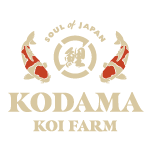Aokiya Koi Farm
When it comes to one-of-a-kind beauty, I must say Mr. Aoki at Aokiya is second to none. Mr. Haruo Aoki breeds Nishikigoi in Ojiya-city, Niigata. His special ability to breed new varieties is unsurpassed. He has always pursued new, high quality varieties. He is a great challenger.
Learn More About Aokiya Koi Farm
Owner(s): Mr. Aoki
Specialty: Kikokuryu, Beni Kikokuryu, Lemon Hariwake, Goshiki, Kikusui, Kawarimono and more
Description: When it comes to one-of-a-kind beauty, Mr. Aoki at Aokiya is second to none. Beni Kikokuryu, the grand champion at 4th International Junior Koi show, is one of his masterpiece. His father, Haruo, and he also created more new varieties than any other breeders. Kikokuryu is a good example. They are challengers and contributors to the Koi world. Mr. Haruo Aoki breeds Nishikigoi in Ojiya-city, Niigata. His special ability to breed new varieties is unsurpassed. No one has ever succeeded in breeding the varieties he has bread. Once, his Kikokuryu caused a sensation in the Nishikigoi world. His Kikokuryu had Platinum-colored skin with Sumi on it. On Platinum-colored skin, red and yellow easily appear. However, on Platinum-colored skin, it was almost impossible for Sumi to appear. His superb Koi gave the Nishikigoi world a big shock. His name came to be seen a lot in a section of Hikari Mono of the All Japan Nishikigoi Show and the Wakagoi show afterwards.
Interview with Aokiya Koi Farm
Interview on June/August 2003
Aokiya Koi Farm
by Mamoru Kodama
I visited Mr. Haruo Aoki today who came into the limelight of the Nishikigoi world because he created varieties that had not existed before in the Nishikigoi industry, such as Kikokuryu and Beni Kikokuryu.
Kodama:
What of koi obsessed you in the first place, Mr. Aoki?
Aoki:
I was born in Iketani of Yamakoshi Village, the birthplace of Nishikigoi. Because there were many koi breeders around since my childhood, I was used to Nishikigoi naturally. There was nothing like TV or radio in my childhood. All we could do for fun was to catch fish in a stream or raise koi in the rice fields. When I was in elementary school, I picked edible wild plants like brackens or osmandas to sell. I also peeled off skins of mulberries to sell. That is how I made pocket money. I liked koi and so I tried hard to buy them. And, with my pocket money, I bought 100 fry for 50 yen. One year, 100 koi that I bought for 50 yen became 1000 yen in the autumn. It was big money to a child like me. I was very happy. Such experiences gave me a chance to devote to koi.
Kodama:
What was the variety of the koi?
Aoki:
It was Sanke (Taisho Sanke). I, as a child, did not understand the value, but they seemed to have become really nice ones. When the adult paid me 1000 yen, I was really surprised.
Kodama:
Did you continue to grow koi thereafter?
Aoki:
I wanted to breed koi when I grew up. But I got a job in a restaurant in Osaka and studied cooking. After finishing the training in Osaka in 1970, I opened a barbecue restaurant in Katagai where I still am. I could not resist breeding koi with my childhood memory, so I started koi breeding right after in 1972.
Kodama:
It has been more than 30 years since 1972! You did it for quite a long time.
Aoki:
It is definitely a hobby because I breed koi while running the restaurant. But still I have been breeding koi for more than 30 years.
Kodama:
What kind of policy do you have when it comes to koi breeding?
Aoki:
I thought that I should breed varieties that nobody does. So that is what I have always been doing. About 15 years ago, I thought that exporting would be a big thing and expected that popular varieties abroad would be Doitsu and Hikarimono. And so, I paid attention to "Kikusui" in Hikarimono and tried to create a a new variety with it.
Kodama:
I see. 80% of koi produced in Niigata go abroad now. As you exactly foresaw, the demand from foreign countries increased. And Hikarimono is popular abroad. Especially, your Kikusui and Kikokuryu are highly demanded. In this sense, you were absolutely right, weren't you?
Aoki:
Recently, koi hobbyists in foreign countries improved their eye for koi and have come to buy real nice ones. I think we must make more efforts to improve the quality of koi and we must create new varieties, too.
Kodama:
" Kikokuryu" that you created made a sensation in the Nishikigoi world. Please tell us about the creation process of Kikokuryu.
Aoki:
It was 1993. 10 years ago, I crossbred a male Kumonryu with a female Kikusui. At the time, "Kikokuryu" appeared. When the Kikokuryu became three years old, it won "Best in Variety" at the All Japan Combined Young Nishikigoi Show.
Kodama:
The Kikokuryu at that time was beautiful because the sumi pattern was described on a shiny platinum body, it is notan exaggeration to say it was an innovative new variety. There was no koi that had sumi on platinum. Your contribution was truly great. Also, "Beni Kikokuryu," another one of your creations, is famous. How did you create it?
Aoki:
It is also from a Kumonryu. Kikokuryu simply has sumi on platinum. But by crossing a Kikusui with a Kumonryu, "the red of the Kikusui" came out. Koi without red became Kikokuryu whereas koi with red became Beni Kikokuryu.
Kodama:
Interesting. "Kin Kikokuryu" was created by Mr. Seiki Igarashi in Ozumori. Please explain the difference from that koi.
Aoki:
Kin Kikokuryu of Mr. Igarashi has gold. My Beni Kikokuryu has "cinnabar red." It is a difference of gold and cinnabar red.
Kodama:
I see. Because Mr. Igarashi crossed a Kumonryu with a Kin Showa to create Kin Kikokuryu, it has a golden color. You crossed a Kumonryu with a Kikusui for Beni Kikokuryu; it has red.
Aoki:
Exactly. Therefore, my Beni Kikokuryu is characterized with a deep red hi.
Kodama:
Speaking of characteristics, Beni Kikokuryu continuously changes sumi, doesn't it?
Aoki:
Yes. The hi pattern of Beni Kikokuryu does not change, but the sumi does depending on the environment. It is a fun part of Beni Kikokuryu that the sumi changes like the Kumonryu.
Kodama:
Mmmm. It changed very wonderfully. The change of sumi is a charm of Beni Kikokuryu. Now, please tell us how you breed Kikokuryu.
Aoki:
When I breed Kikokuryu, because its parent is Kumonryu, we cull only black fry from the beginning to the end. After they hatch, we first pick only the black fry. And while keeping them for about 1 month, they grow about 3 cm (1.2?) long. Again, we cull only black fry. At this culling, we throw away gray ones and sort only lacquer black ones. And, at the third culling, hi comes out little by little. But we still put "sumi quality" as a top priority in culling.
Kodama:
Does platinum color appear at tosai?
Aoki:
At the first and second culling, platinum color does not appear. At around the third time, it starts glittering. But still, we sort them only by sumi quality. The sorting work holds no enjoyment as in Kohaku and Taisho Sanke at all. It is nothing but repetition, tedious sorting work.
Kodama:
I see. Beautiful Nishikigoi do not appear until you repeat three cullings patiently, which is not fun or pleasant. Around when does the sheen start appearing?
Aoki:
Well, at the third sorting when they are about 6 to 7 cm (2.4? to 2.8?), the sheen can be recognized little by little. The sheen gets stronger as the koi grows.
Kodama:
How many do you breed?
Aoki:
I had three pair laying eggs. I selected about 30,000 out of 300,000 fry. And, I selected 3,000 tosai out of the 30,000 by autumn. I exported them around March to April.
Kodama:
Thank you for your time today.
We have koi available to buy from Aokiya Koi Farm online if shown below the search field. If not, contact us with what you're looking for and we'll help find the right koi.
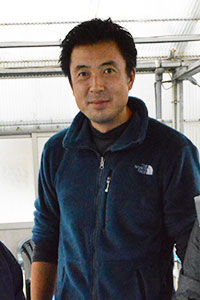
We couldn't find any products in our online store for your search in our Aokiya Koi Farm catalog,
BUT we may have inventory at the farm or in Japan, so please use the "Request a Koi" form to help us find your perfect koi fish.
Koi Auctions Ending Soon!
Place your bids now to win your choice of beautiful Japanese koi for sale at a great price! We always have a variety of fixed price koi and consistently run koi auctions ending daily; with most special auctions ending on Wednesday and Sunday each week.
-
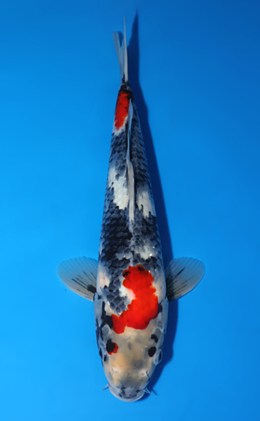
Showa – koi #x0701a034
Starting bid: $80.00Time left:Login / Register to BidEstimated Value: $300.00Breeder(s): Dainichi Koi FarmSex: MaleBorn in: 2024Size: 12.20 inch / 31 cmVariety: Showa, -

Shusui – koi #x0716a019
Starting bid: $70.00Time left:Login / Register to BidEstimated Value: $300.00Breeder(s): Otsuka Koi FarmSex: UnknownBorn in: 2024Size: 7.48 inch / 19 cmVariety: Shusui, -
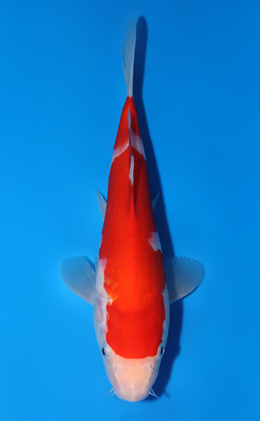
Kohaku – koi #x0701a023
Starting bid: $90.00Time left:Login / Register to BidEstimated Value: $300.00Breeder(s): Dainichi Koi FarmSex: MaleBorn in: 2024Size: 9.45 inch / 24 cmVariety: Kohaku, -
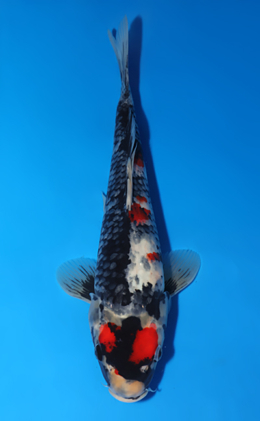
Showa – koi #x0701a026
Starting bid: $90.00Time left:Login / Register to BidEstimated Value: $300.00Breeder(s): Dainichi Koi FarmSex: MaleBorn in: 2024Size: 12.20 inch / 31 cmVariety: Showa,
